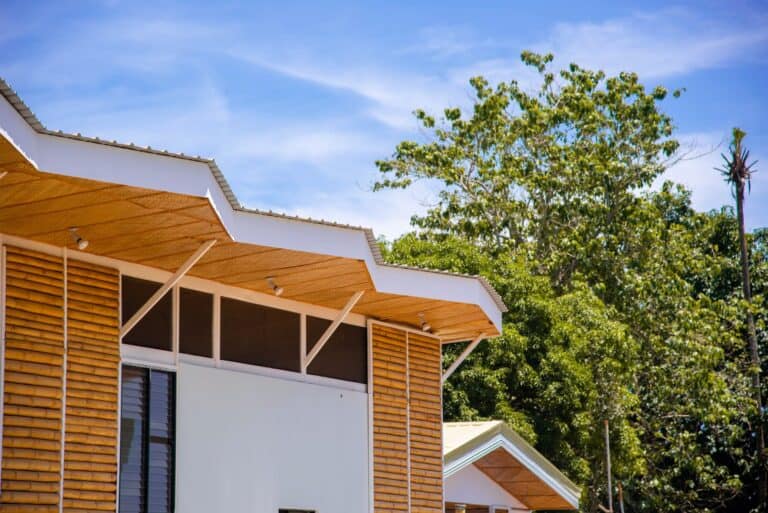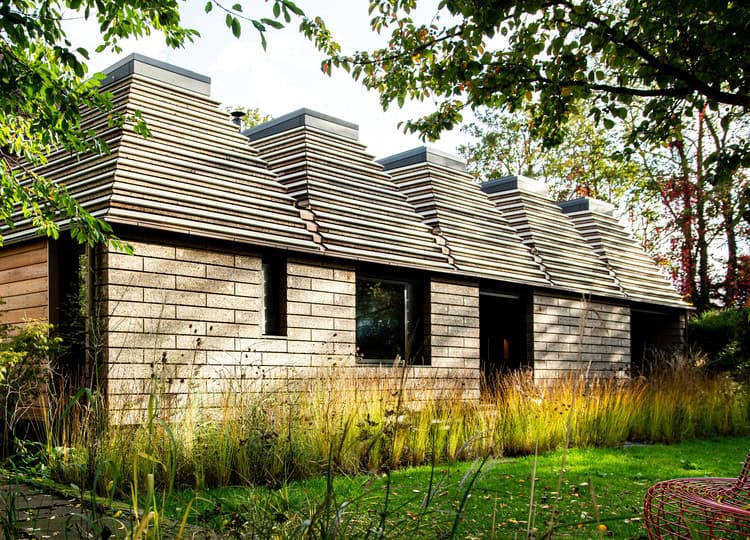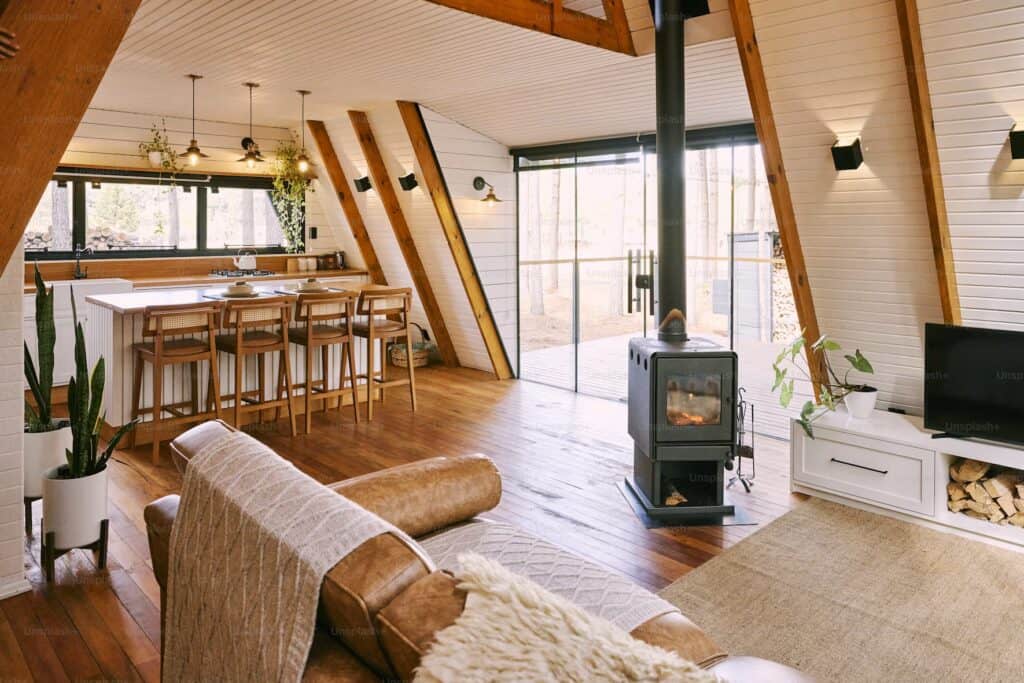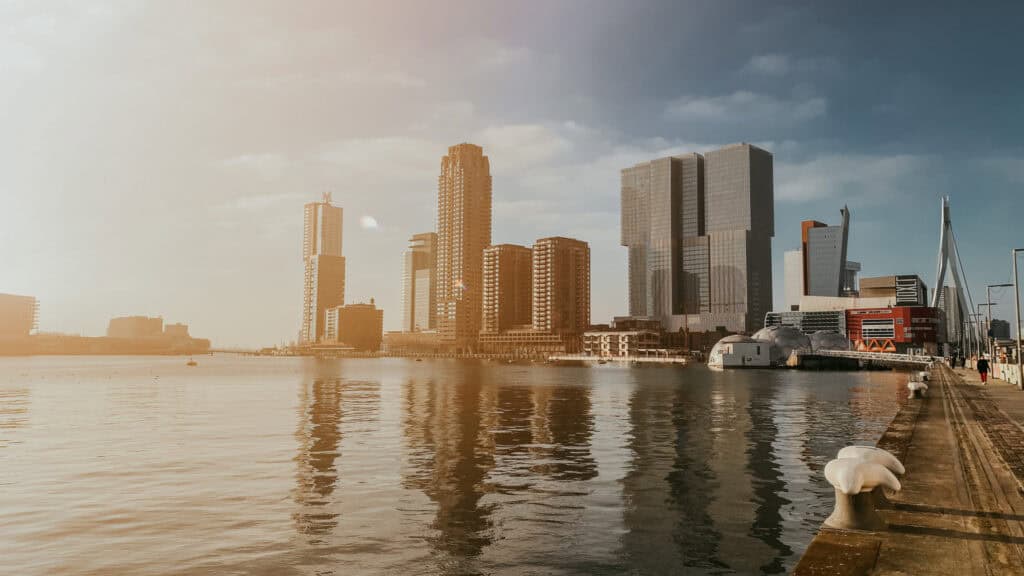In today’s society, one of the main issues worldwide is the massive housing crisis. By 2025, projections show that the housing shortage will affect up to 1.5 billion people across the globe. This is mainly due to the high costs of living, which have risen faster than people’s incomes. Such imbalance means that people are less likely to find the adequate housing they need. UN-Habitat insights showcase that by 2030, three billion people will need proper housing. This shortage translates into a demand of 96,000 affordable homes on daily basis. Governments and businesses are developing solutions to address these challenges and expand possibilities.

Many Available Solutions
Housing solutions come from the technological innovations and creativity of today. For instance, UN-Habitat has introduced urban planning initiatives in many countries. These projects are for nations facing housing shortages like Cameroon, Egypt, and Jordan. Governments around the globe are also helping in solving this crisis. Resolutions come in many forms, from government policies to property structure and design. Japan has even provided affordable homes through simplified zoning laws and tax incentives. Since 2013, 62,000 homes have been built in the city of Tokyo every year. Meanwhile, some countries are implementing laws that urge development amid lower property taxes. For example, the United States is reducing regulatory barriers for housing production. In India, affordable prefabricated panels from waste material help reduce expensive production costs. This then allows more opportunities for building houses.
While it may still be in its early stages, innovative solutions have shown promise. It’s no wonder why a large number of startups have started exploring such possibilities. Prefabrication, 3D printed homes, and simplified finishes help reduce costs and turnaround times. Living arrangements such as coliving and flat sharing help ease housing shortage too.
These ideas showcase people’s willingness to explore innovation. In this article, we list more types of housing solutions available in the market.
1. Refurbishing Unused Office Buildings
The COVID-19 pandemic has transformed the working landscape all over the globe. Due to lockdowns and safety concerns, companies worldwide went for remote work arrangements. These have enabled people to do their jobs from their homes. In early 2020, office attendance throughout major US cities dropped by 90%. But even now, the demand for office spaces is still lower than during the pre pandemic era. Numbers from Jones Lang La Salle showcase how more than 20% percent of offices in the US remain vacant. 35% of workers are on a completely remote setup, while 40% are on a hybrid one. These vacancies have caused the adaptive reuse of office buildings for housing.
Repurposing buildings is more time and labor efficient than constructing new ones. These projects promote transformational architecture instead of demolition jobs. Smaller and older buildings are ideal for these conversions due to their structure. These properties’ high ceilings and large windows offer space and light for homes. Repurposing buildings is also 30% cheaper than building new ones. These conversions incur less time and a smaller carbon footprint.
Converting offices into residences has been practiced since the 80s’. But, it is now more prevalent than ever for major cities to commit to the effort. In 2021, the city of London introduced a five-year plan to create 1,500 homes from vacant offices. Between 2020 and 2021, 41% of US housing conversions came from offices. A prominent example is Pearl House in New York’s Seaport district. As the largest office-to-residential conversion in the state, it houses 588 upscale units. Previously a State Department office, Washington D.C’s ‘The Wray’ is now a community of 158 apartments. In Chicago, the c1902 ‘National Life Building’ is now the ‘Millennium on LaSalle’ complex.
Here at the Citylifer, our environmental, social, and governance policies involve this too. We also repurpose vacant offices into residential properties. In recycling and reusing materials, we further minimise waste.
These conversions continue to show how sustainability and creativity transform modern architecture. By leveraging sound building foundations, builders help create high-quality affordable housing.
2. Water Houses in the Netherlands

Photo from: Marlies Rohmer
Overpopulation and land scarcity are the main contributing factors to home shortages. In the Netherlands, one-fifth of the total surface area is water. But as climate change raises sea levels and worsens floods, the Dutch also explore ways to adapt. Major cities like Amsterdam, Rotterdam, and Utrecht currently have communities of floating homes. Unlike houseboats, floating homes are houses turned into boats, not vice versa. Fixed on the shore on top of the water, floating homes withstand rising sea water or floods.
For stability, these properties use concrete hulls, shock-absorbent materials, and dug poles. Floating homes in the Netherlands are prefabricated tri-level townhouses. These properties showcase traditional materials like timber, steel, and glass. Floating homes are in many parts of the country. In Amsterdam, ‘Waterbuurt’, is a community of 100 floating homes on the waters of Lake Elmer. Meanwhile, Schoonschip is a floating community with 46 households and 150 residents. Set in an old manufacturing area, it provides sustainable homes north of Amsterdam. Floating properties also go beyond residential purposes, offering wider innovative housing solutions. For instance, Rotterdam houses the Floating Pavilion and Floating Farm along its ports. There is also Floating Office Rotterdam, the largest of its kind worldwide.
By using less land, floating homes help resolve housing shortage, as well as land scarcity. This practice also generates less carbon footprint than conventional construction on land. Both sustainable and innovative, floating homes use eco-friendly materials and energy-efficient models. These also help the environment by adapting to natural surroundings. Specifically, the water offers energy efficiency for the home. The water’s warmth lessens the need for heating in colder months. Meanwhile, the cooling effect makes summers more comfortable.
3. Repurposing Industrial Containers
Converting shipping containers is another way that addresses the housing shortage. These massive steel vessels transport products worldwide and now provide alternative homes. Due to their thermal insulations, refrigerated containers are great for conversions. These fixtures help maintain temperatures to make houses more liveable and comfortable.
From sustainability to affordability, container homes offer a wide range of benefits. Having come from recycled shipping containers, these houses help reduce waste. Container homes also promote energy efficiency through proper insulation. These units cost less and take less time than creating homes from scratch. Container homes have outstanding foundations too. Formerly vessels carrying heavy goods amidst harsh weather, they also become durable homes. Container homes also offer flexibility both in model and location. Like in traditional homes, fixtures and finishes are customizable according to taste. But for container homes, they can be stacked, rearranged or transferred. Whether you want to live in vibrant cities or peaceful rural pockets, you can do so in container homes. Just be sure to follow local regulations before changing scenery.
With all these benefits, it’s no wonder why container homes are popular worldwide. In Amsterdam, the Keetwonen is one of the world’s first container home neighbourhoods. Shipping containers turned into quality modular homes through expert design and innovative technologies. In China, the ‘WFH House’ is a 180sqm container home with an energy and water-efficient model. There is also the award-winning Grillagh Water House based in rural Northern Ireland. It has four 14 metre shipping containers that combine to form two cantilever forms. The ‘Escape Den’ in Bangladesh is a modern home made from upcycled containers. In Copenhagen, Urban Rigger is a community of floating container homes. It is a residential unit of student apartments. Container homes’ popularity across countries proves its functionality and adaptability to different surroundings.
The Role of Cutting-Edge Technologies
The construction sector continues to face issues with budget, schedules, and environmental impact. Innovations like 3D printing, AI, and sustainable materials help solve today’s housing crisis. Here are the ways these three transform the industry:

3D Printing
3D printing is a process that produces three-dimensional objects through layering materials. It allows for the precise creation and customization of various structures. Examples include facades, columns, as well as other decorative and functional fixtures. 3D printing in construction has proven steady progress through the years. Predictions even show that its market value will reach up to one billion dollars by 2028. Such development comes from 3D printing’s speed, accuracy, less waste, and design flexibility. Time constraints are a common problem in building properties. Through 3D printing, structures in a home won’t have to take months or years to complete. Worldwide, structural projects accumulate up to one billion tons of waste each year. By only using the necessary materials for production, 3D printing helps reduce waste. It also offers creative freedom for builders and architects. In traditional construction, some plans tend to be too challenging to execute. By providing flexibility, 3D printing helps drive more innovation in the industry. And last but not least, 3D printing is all about precision, which is a valuable aspect of the industry. It enables accurate intricate details and lessens human error which may cause harm.
AI (Artificial Intelligence)
The construction industry continues to benefit from digital innovations like AI. By streamlining the following processes and aspects, AI advances projects to greater heights:
1. Precalculation
Through AI in construction, teams can precalculate work safety, quality control, and bids. This type of predictive technology aids in efficient planning and preparation.
2. Organisation and arrangements
Leaders can also maximise AI for organising internal affairs and assignments. This technology further systematises schedules, administrative workflows, budget concerns, and maintenance requirements.
3. Monitoring
In monitoring projects, AI helps identify discrepancies and improve capacity, even remotely. Key factors include onsite detection, real-time dashboards, and activity visualization.
4. Risk reduction
Mitigating risks is a part of every business, and construction is no stranger to this. AI insights lessen financial, legal, and security risks for architects. Risks related to onsite work are also prime concerns. After all, a labor-intensive industry like this should always uphold safety. AI assists in avoiding accidents through updates from surveillance cameras and sensors.
5. Documentation
Tracking and documentation are also great tools for productivity. AI-powered documentation increases transparency and accountability, ideal for future audits and maintenance.
6. Design
Architects can use AI to support their projects as well. It generates models for structures more quickly and affordably.
7. Sustainability
In using AI for ESG, construction firms help promote energy efficiency and recycling.
Sustainable Materials
Recycled materials and renewable resources are vital in construction. After all, the sector does not exactly have an environmentally inclined reputation. Insights reveal that the industry comprises about 42% of greenhouse emissions worldwide. Landfills are piling up, and disposed materials also contribute to this. By using recycled concrete, glass, and steel, builders reduce waste and conserve energy. Speaking of energy efficiency, renewable sources are popular for this too. These come in various shapes and sizes but common examples include bamboo, cork, and wood.
-
Bamboo
One of the fastest-growing plants worldwide, bamboo suits eco-friendly structures. It is resistant to heat, moisture, and insect pressure, and is durable to earthquakes.

-
Cork
Cork comes from the bark of the cork oak tree. Offering great insulation, it’s also resistant to fire, water, and mold. Cork is a popular material for floors, walls, furniture, and other decorative elements.

Photo from: Paula Pintos
- Wood
Wood is another ideal sustainable material, especially the reclaimed variant. Reclaimed wood roots from property demolition and deconstruction. Its method of processing helps environmental and energy conservation. With its age, reclaimed wood is more durable than its newer, softer counterparts. This factor makes it suitable for flooring, trims, and cabinets. Overall, these quality materials provide better housing, without the expensive maintenance costs.
Today, the housing, economic, and environmental sectors are all in crisis. This predicament highlights the importance of innovative ideas that address these issues. Therefore, investments in research and development initiatives are crucial in industry solutions.

Economic and Research Implications
Necessity for R&D investment in innovative housing
In properties, investments have always focused on costs, turnaround times, and quality maintenance. But today, adapting to ever-changing needs is important amidst the housing shortage. For example, climate change underscores the need for more sustainable structures. Traditional concrete and cement processing comprise 8% of the world’s emissions. Now more than ever, environmentally ethical practices are crucial in the industry. Investing in innovation also helps curb issues on efficiency and budget.
On a positive note, alternative solutions are seeing progress by the day. In 2023, construction technology, or ‘Contech’ garnered a $3.03 billion investment. This helps drive productivity, green projects, supplies, and future technologies. Enhanced productivity provides advanced tools, automation, and robotics. There is also green construction, which aims to reduce the industry’s carbon footprint. It spans decarbonization, carbon capture, sustainable materials, and water conservation. Meanwhile, ‘construction supply chain’, focuses on material procurement to help reduce delays. Contech looks ahead with 3D printing, new materials, and unique practices. Another aspect of innovation is enabling key stakeholders to adapt to them. Crews must receive proper training to help a smooth transition to digital practices. And when workers have the right tools and knowledge, they innovate more.
Comparative analysis of innovative and traditional housing
Apart from a housing shortage, countries face climate change and economic instability. Modular homes help address these issues by transforming the construction landscape. With modular construction, builders prefabricate units and transport them for assembly. This method allows simultaneous procedure completion, speeding things up and cutting costs. Modular projects also provide safety for people. It’s no secret that the industry involves working in hazardous environments. In the U.S., it has a fatality rate of 9.6%. As modular projects occur offsite, they present safer alternatives to onsite structures. Accidents in modular projects are 80% lower than those of their traditional counterparts. While modular projects are great solutions, the traditional method still has advantages. It has a stronger reputation in project planning, logistics, and public acceptance. As a familiar approach with less learning curve, traditional construction is still popular. In other words, innovative alternatives are not meant to replace traditional methods. Instead, it highlights the urgency for the business to improve and meet today’s needs.

Potential for government incentives and private investments to stimulate innovation
Government intervention
As mentioned above there are plenty of innovative housing solutions available worldwide. Like all projects, financial resources are the driving force behind these initiatives. Funds from governments or private investments are crucial in actualising these projects. In 2023, the U.S. provided $110.9 billion for basic and applied research. This investment was for innovations that drive economic growth. For housing, federal programs include low-income tax credits, development grants, and public funding. In Australia, government units partner with states to reform home supply and pricing. In the National Housing Accord’s five-year plan, $350 million will go to 10,000 affordable homes. The federal budget also focuses on tax incentives, funding, reforms, and workforce training. Government units also anchor on private groups for housing solutions. In the U.S., there is a federal program called Low Income Housing Tax Credit or LIHTC. It enables private companies to invest in high-quality affordable homes through tax deductions. Both government units and private sectors join in driving innovation. Capital from private groups helps in elevating the initiatives funded by the government. Affordable homes from public funds can further thrive by leveraging private investments. These contributions will assist in preserving and expanding these projects.
Support from the private sector
In 2021, Microsoft pledged $500 million to help provide affordable homes in Seattle. From that investment, $225 million went to preserve and develop new middle-income housing. $250 million went to low-income residential projects, while $25 million funded homelessness grants. Harvard University also has the “Harvard Local Housing Collaborative” initiative. This project assists in Boston’s affordable housing and community development. It started with the university’s $20 million investment for their 20-year plan in 2000. The group also renewed its commitment with another $20 million contribution in 2019.

Global Trends in Coliving Spaces
Coliving spaces as a solution to housing shortage
Modern housing ideas can also go beyond foundation-related innovations. As for living arrangements, coliving also helps address today’s crisis. By definition, coliving is when residents live in a shared home and enjoy communal spaces. This setup provides an answer to land shortage and high real estate prices. Redefining urban living in the modern age, coliving provides plenty of benefits. Amidst increasing home prices, this setup is a friendlier alternative. Coliving provides affordability through shared resources ‘and cost-splitting arrangements. In general, coliving properties also showcase communal spaces. These are settings where people gather, work, play, and relax. Examples include coworking rooms, lounges, laundry areas, and gyms.
Fostering a sense of community
Apart from pricing issues, coliving also eases social isolation and loneliness. Social isolation affects one in four old people, while five to 15% of adolescents are lonely. Social connections also affect a person’s quality of life and physical and mental health. Coliving uplifts lives, especially those in search of a sense of belonging. By letting people interact and connect, communal spaces promote meaningful experiences. In coliving, sharing becomes a part of people’s daily lives. This setup is popular among professionals, students, and urban dwellers. But by fostering communities, anyone can join in. Singles, families, and elderly people can also have social harmony.
Coliving initiatives and their impact on residents’ lives
From vibrant cities to island destinations, coliving spaces are around the world. ‘Outpost’ in Bali provides shared living and working areas in the middle of paradise. This property enriches remote workers’ lives through team events and retreats. In the seaside village of Taghazout, ‘SunDesk’ promotes work-life balance for its residents. This development offers well-equipped work spaces and comfortable accommodation. There is also ‘Lyf Funan Singapore’ which creates a tight community in a business district. It provides travellers and locals with modern apartments and communal spaces. The Lyf team also hosts cultural events for residents to join. In the heart of the city, Nest Copenhagen caters to locals and travellers. This non-profit coliving space offers communal spaces and events perfect for collaboration.
Conclusion: Call to Action
The world is facing a housing crisis. Land scarcity and high prices make it hard to find a home. High-quality affordable housing is even harder to find. But today, creativity and technology have yielded various solutions. Alternatives to traditional structures include repurposed buildings, floating houses, and container homes. These solutions promote sustainability, space efficiency, and affordability. As for materials, 3D printing, AI, and sustainable resources transform the industry. These options offer quicker turnaround times and reduced environmental impact in the business.
With the myriad of solutions available worldwide, the possibilities are endless. The support for these innovations will pave the way for more progress in the future. Such support comes in the form of acceptance and investment from key stakeholders. Investors, policymakers, and communities play a vital role in empowering innovations. Yet, creating and financing innovative housing solutions is not easy. And embracing it is not a straightforward undertaking either. Understandably, there is always hesitancy to break traditions and embrace change. As the world changes, we must continue to explore and adapt. For today’s crisis, innovative housing offers promising ways to conquer global challenges.
The Citylifer Perspective
Sustainable materials
We prioritize lowering our carbon footprint and reducing waste, especially during material sourcing. Our strategy involves repurposing vacant office buildings into residences, focusing on recycling and reusing materials to limit waste. When sourcing new building materials or selecting furnishings and equipment, we opt for eco-friendly and durable options to minimize environmental impact.
Upcycled buildings
At The Citylifer we don’t intend to build new buildings from scratch but rather recycle old office buildings and adapt our design to what already exists. The Citylifer’s sustainability-focused design is based on an office grid structure. This innovative design allows to repurpose vacant inner city office buildings while also accommodating newly constructed development.
FAQ
Today’s crisis is due to land scarcity, rising populations, and expensive living costs.
Innovative housing solutions include floating houses, container homes, and repurposed office spaces.
Repurposing office buildings into residential properties helps provide more homes. This is more sustainable than demolition jobs and constructing houses from scratch.
A floating home is a stationary residential unit floating atop the water.
Container homes are previous shipping containers turned into homes.
They can use innovations like 3D printing, AI, and sustainable resources.





